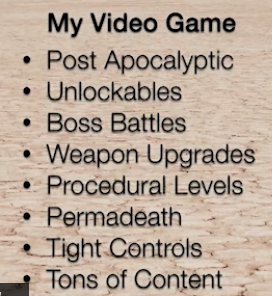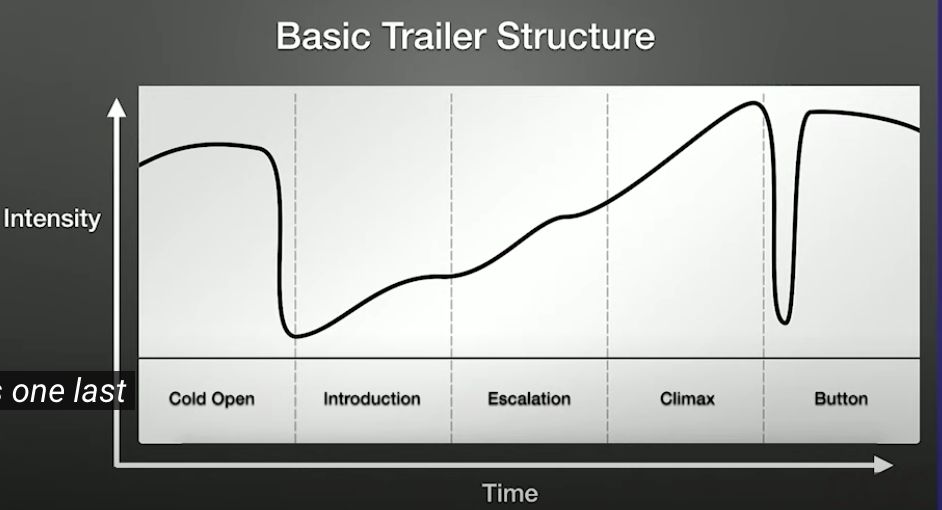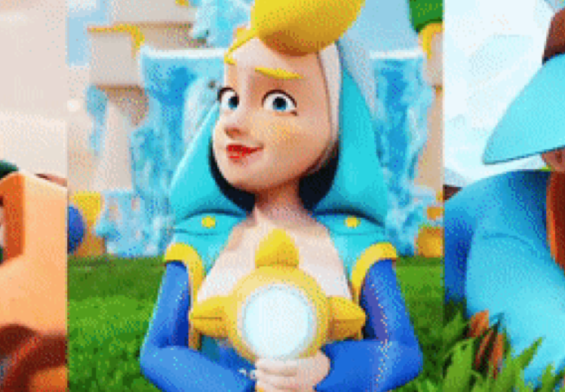By Derek Liu at GDC 2019

Intro: Derek has been working on trailer editing for over 15 years, he works with agencies on trailers for AAA games as well as numerous indie games. The game genre includes both gamy games and story-driven games which are lighter on game mechanics.
Agenda
- Unique strengths of trailers
- Common pitfalls
- Finding the hook
- Teaching the audience
- Trailer structure
- Tips & Takeaways
Goals of a Game Trailer
The goals are to teach, to excite and to tease. One or two of these are good, but you can do all three of these for your trailer, will be fantastic.
Don’t use trailers to communicate ideas that are easily described with words. Trailers lets you show the game’s mood, the mechanics, and the experience, and if well done, you can evoke feelings from the audience.
For example, this is from an untitled goose game and over a few seconds, this clip speaks for itself and what the game is about. In many cases, words aren’t necessary but if you are worried people won’t get it, you may add words.
Also when you have a lot of text on a trailer, it can feel very salesy, and turn people off if you push a little bit too hard. The exciting thing about trailers is trailers use the language of film, you should take all the advantages of all the unique strengths of film.
The basic tools of the film: Visuals, sound, and editing.

A trailer is not a montage of random clips. The order in which you put things in it really matters. If you have two shots, each will have its own individual meaning, but you cut them together and you have a third meaning, it’s really powerful. For example, editing can really highlight cause and effect which is something that you really want to teach people. Trailers don’t have to adhere to exactly what the game looks like, it can draw attention to how the game works. In games, players cannot easily be attracted to one spot, but in a trailer, you have all the freedom, and people will accept that.
Don’t think of a trailer as a video of bullet points or like a delivery system for bullet points, which yes, you can get the job done if you just say like weapons, battles, and then show them. But the format can get very predictable and the audience can get keyed in to where you are going, then it gets a little less interesting. Another way to put this is that don’t waste time telling people the way your game is similar to other games.

People watch a trailer for a new game, they’re going in wanting something new, they are looking for the different thing about this one, so you should try to give that to them. If you focus on these bullet points of your game, your audience will wonder if there is anything else.
The best familiar game term to use is maybe your game has a unique combination of things. So for example, like spelunky combined platformer with rogue-likes and dicey dungeons combined like dice rolling and dungeon crawler, or a match 3 combined with a story RPG. So that’s interesting and novel.
If your game is not a combination of two similar genres, you may focus on the unique things.
One or two things, like what is something that can only be said about your game. It’s better for people to wonder about one or two things about your game, versus if you throw everything at them like a dozen different ideas and people don’t retain any of the information.
A lot of games seem to be afraid to put their best foot forward when they have something unique and novel, they think it’s risky and you shouldn’t be coy about what is unique. What you should do is embrace what is unique about your game and just make it look as good as possible. If you are unsure about whether or not your trailer is working, you should think about what would someone tell a friend about your game after seeing your trailer? They usually pick on something like one thing they can remember.
For example, like
Ooblets — -you grow cute animals on the farm.
Firewatch — -Your lonely middle-aged man in the woods.
Heaven’s Vault — Your space archaeologist who deciphers an ancient language.
Tokyo Jungle — Like you’re in Tokyo, but it’s a jungle in your Pomeranian.
SuperHot — -time only changes when you move
Think about the needs of the audience, and they try to comprehend what’s in the game, looking for a story hook, the gameplay. The game trailer needs to teach players how to fit into the game.
It’s important to show how than the what about the game.
Think of a game like a tutorial.
It’s important for certain ideas to get introduced early, especially new and novel mechanics, you really need to build that knowledge because they don’t have the context to know what’s going on. It sounds simple, but many trailers put important information in the middle or late in the trailer. So for example, if all the first shots in the trailer were of animals with mustaches, you may think is it Mario Game or it look like a Mario game. Later on, they show Mario jumping into a thing, then kind of all shots that came before then would have been hard to remember at that point.
So think about one or two pieces of information needed to kind of recontextualize all the rest of the footage that you want to show which is really exciting. Because the audience won’t get excited or invested if they are working too hard to understand.
Show the Cool idea first, then explore it.

Basically, you want the audience to see the potential and understand the possibilities and when they get really excited, they get the game and can do this or that, yes, they want to play it.
Basic Trailer Structure — — Pacing
Pacing is hard but here we have this graph where the bottom is time and the other is intensity. Intensity generally means like how exciting is the trailer at that moment. If the intensity is low the entire time, of course, it’s boring, but by the conversely, if it’s high all the time, that also gets boring.
The curve we like is:

Cold open — To hook the audience by using exciting editing, pretty visuals or action or humor, starts very exciting, it kind of hook the audience and then after that
Introduction — — Educate the audience, tell them where the chess pieces are,
you hopefully have their attention, then you start introducing some new ideas,
Escalation — You got to introduce some complexity into the story
and then you escalate maybe turn them on their head,
Climax — Excite the audience
And call to action in the end slate.
Hopefully by the end, but the most exciting footage, and then maybe every title card, and if you want sometimes,
Button — you put a button, which is like this last little tease
The best and worst thing about game trailers is you get to create all your own shots.

Good shots hierarchy of needs.

How do you decide the order of shots?
- Inventory the game’s objects (Player verbs, enemies, environment, obstacles, power-ups)
- Rate your clips: mark them with stars depending on their importance
- Order clips from least to most exciting: do things in waves, organize clips in waves of intensity

Tips & Takeaways
- Find the uniqueness about your game, find the hook
- Let the game speak for itself
- Good shot hierarchy of needs
- Get good music: all top 10 game trailers have great music, listen to trailer music for inspiration
- Put things in sync, but actions on the beat
- Read your trailer dialogue from beginning to end. Does it tell a story or Does it feel like random scenes?
- Shots should end once their main idea is expressed, everything will be nice and tight.
- If people don’t recognize our logo, don’t show it in the opening.
- Turn off the HUD
- Don’t get hung up on editing style. Worry about the trailer’s goals.
- Show your trailer to someone who doesn’t know anything about your game.
- Don’t show everything. (Tease trailer)
- More information can be less interesting. Don’t rob people’s sense of exploring ideas.
- Think about your game trailer as early as possible (Even before, during design)




